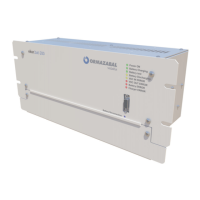
Do you have a question about the Ormazabal velatia ekor.bat-200 and is the answer not in the manual?
| Input Voltage | 230 Vac (195-265 Vac) |
|---|---|
| Output Current | 20 A |
| Power | 500 W |
| Efficiency | > 88 % |
| Protection | Reverse polarity, short circuit, overvoltage |
| Operating Temperature | -20 ºC to +50 ºC |
| Storage Temperature | -40 ºC to +85 ºC |
| Humidity | 95% non-condensing |
| Dimensions | 240 x 160 x 85 mm |
| Weight | 2.5 Kg |
Provides a basic definition of the ekor.bat-200 unit and its purpose.
Illustrates the ekor.bat-200 charger as a UPS with battery connection to the output.
Details the operational processes of the battery charger, including start-up and connection.
Describes the initial energizing and battery connection sequence of the unit.
Explains the battery charge process, including fast and floating states and compensation.
Details battery discharge procedures, disconnection reasons, and end-of-life alarms.
Explains the automatic battery capacity testing mechanism and its conditions.
Describes the fast test or impedance measurement for determining battery state.
Outlines the input and output electrical specifications, including voltage, current, and power ratings.
Specifies the unit's dielectric rigidity test results and leakage current limits.
Defines the environmental and operating conditions, such as temperature, humidity, and altitude.
Confirms product compliance with EU directives and international standards for electromagnetic compatibility.
Details various tests including radioelectrical interference, insulation, immunity, and RF field compliance.
Describes the terminal blocks and their pin assignments for AC input, alarms, temperature, and DC output.
Explains the meaning and associated functions of the charger's LED indicators for status monitoring.
Details the alarm types (urgent/non-urgent) and their corresponding logic for charger status.
Describes the functions and operation of the front panel button (B1) for start-up and reconnection.
Explains the importance and procedure for correct earthing of the equipment for safety.
Lists and describes the configurable operating parameters accessible via the web interface.
Details parameters related to network configuration, IP addresses, and clock synchronization.
Explains how to force operational states (floating, fast charge, tests) for testing purposes via the web.
Describes the hardware test functionality for checking LEDs and digital outputs remotely.
Provides a step-by-step procedure for replacing the unit's batteries without disconnecting the unit.